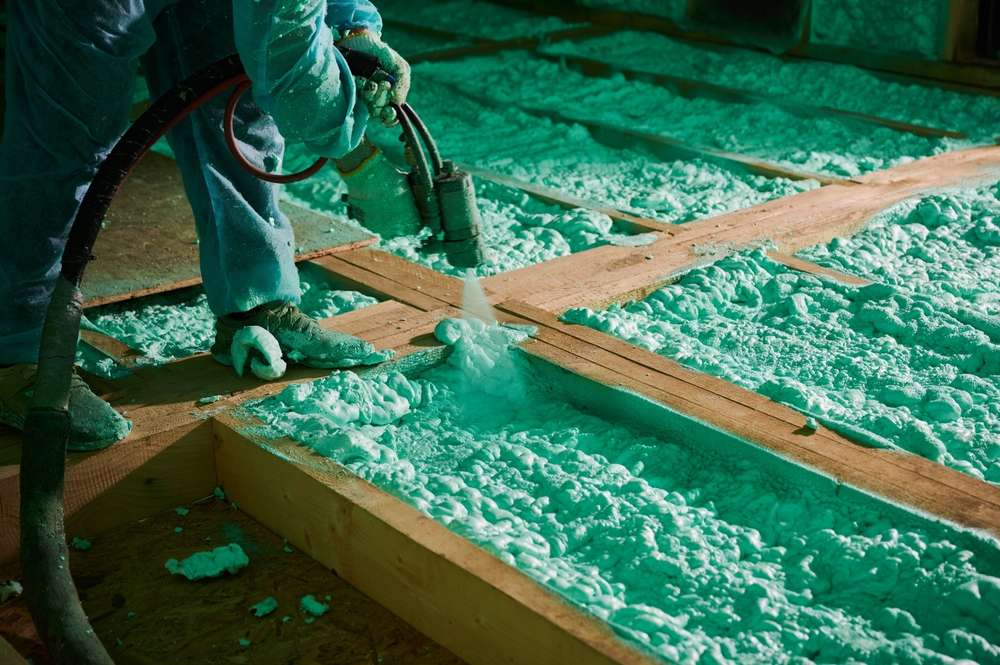Winter Attic Insulation Guide: Keep Your Home Warm and Energy-Efficient This Season
As temperatures drop across much of the country, attic insulation becomes one of the most important steps to keep homes warm and reduce heating costs. A properly insulated attic prevents valuable heat from escaping and helps maintain consistent indoor temperatures throughout the winter months. Beyond comfort, insulation plays a major role in lowering energy consumption, which benefits both homeowners and the environment.

As temperatures drop and heating systems kick into high gear, many homeowners overlook one of the most effective ways to improve home comfort and reduce energy costs: proper attic insulation. Your attic serves as a critical thermal boundary between your living space and the cold winter air. Without adequate insulation, up to 25% of your home’s heat can escape through the roof, forcing your heating system to work harder and driving up utility bills. This comprehensive guide will help you understand attic insulation options, make informed decisions about winter upgrades, and potentially access financial support for your insulation project.
Attic Insulation Options Ideal for Cold Climate Regions
Selecting the right insulation material for cold climates requires understanding R-values—a measure of thermal resistance. Higher R-values indicate better insulating performance, which is particularly important in regions with harsh winters. For most cold-climate zones in the United States, energy experts recommend attic insulation with R-values between R-49 and R-60.
Fiberglass batts remain one of the most common and cost-effective options, offering R-values of 2.9 to 3.8 per inch. Cellulose, made from recycled paper products treated with fire retardants, provides slightly better performance at R-3.2 to R-3.8 per inch and excels at filling small gaps. For maximum thermal resistance, spray foam insulation offers R-values of 3.7 to 6.5 per inch and creates an air-tight seal, though at a higher price point.
Mineral wool (also called rock wool) deserves special consideration for cold climates due to its excellent fire resistance, moisture resistance, and sound-dampening qualities. With R-values between 3.0 and 3.3 per inch, it performs well in extreme temperature conditions and doesn’t lose insulating capacity in very cold weather.
Smart Strategies for Winter Attic Insulation Upgrades
Timing your attic insulation project strategically can maximize both comfort and cost-effectiveness. While many homeowners think of insulation as a fall preparation task, mid-winter upgrades can deliver immediate benefits through reduced heating costs and increased comfort. Professional installers typically experience lower demand during winter months, potentially resulting in better scheduling availability and competitive pricing.
Before adding new insulation, conduct a thorough inspection of your attic space. Look for signs of moisture problems, roof leaks, or pest infestations that should be addressed first. Ensure proper attic ventilation remains unobstructed, as this prevents moisture buildup that can compromise insulation effectiveness and lead to mold growth.
Consider a multi-layer approach by combining different insulation types. For example, installing a base layer of spray foam to seal gaps and air leaks, followed by more economical fiberglass or cellulose insulation to reach the desired R-value, can provide optimal performance while managing costs.
Understanding Attic Insulation Costs and Return on Investment
Attic insulation represents one of the most cost-effective home improvements in terms of energy savings and comfort enhancement. The total investment depends on several factors: your home’s size, existing insulation condition, insulation type selected, and whether you choose professional installation or DIY application.
The average cost of professionally installed attic insulation ranges from $1,500 to $3,500 for a typical 1,500-square-foot home. Fiberglass batts generally cost $0.40 to $1.00 per square foot, blown cellulose ranges from $0.60 to $1.80 per square foot, and spray foam commands premium pricing at $1.50 to $5.00 per square foot.
While the upfront investment may seem substantial, the Department of Energy estimates that properly insulating your attic can save 10-50% on heating bills, depending on your climate zone and current insulation levels. With average annual heating costs exceeding $1,400 in cold-climate states, many homeowners recoup their investment within 3-5 years through reduced energy bills.
| Insulation Type | Average Cost (per sq ft) | Typical R-Value (per inch) | Professional Installation Cost (1,500 sq ft) |
|---|---|---|---|
| Fiberglass Batts | $0.40-$1.00 | 2.9-3.8 | $1,500-$2,200 |
| Blown Cellulose | $0.60-$1.80 | 3.2-3.8 | $1,800-$2,500 |
| Spray Foam (Open Cell) | $1.50-$3.00 | 3.7-3.8 | $2,500-$3,500 |
| Spray Foam (Closed Cell) | $3.00-$5.00 | 6.0-6.5 | $3,500-$5,000 |
| Mineral/Rock Wool | $0.90-$2.20 | 3.0-3.3 | $2,000-$3,000 |
Prices, rates, or cost estimates mentioned in this article are based on the latest available information but may change over time. Independent research is advised before making financial decisions.
Financial Support and Incentives for Insulation Installation
The financial burden of attic insulation can be significantly reduced through various support programs and incentives. The federal government offers tax credits for energy-efficient home improvements, including insulation upgrades. Through December 31, 2032, homeowners can claim a tax credit of 30% of the cost of insulation materials, up to $1,200 per year, through the Energy Efficient Home Improvement Credit.
Many utility companies provide rebates or direct discounts for insulation projects that meet specific energy-efficiency standards. These incentives typically range from $0.10 to $0.50 per square foot or cover a percentage of your total project cost. Some utilities even offer free energy audits to help identify insulation needs and potential savings.
State and local governments frequently implement weatherization assistance programs targeting low-income households. These programs may cover the entire cost of necessary insulation improvements for qualifying homeowners. Additionally, some municipalities offer low-interest loans specifically for energy-efficiency upgrades, including attic insulation.
To maximize available support, contact your utility provider, visit the Database of State Incentives for Renewables & Efficiency (DSIRE) website, or consult with insulation contractors who often help customers navigate available incentive programs.
Evaluating Insulation Performance and Maintenance
After installing attic insulation, monitoring its performance helps ensure you’re receiving the expected benefits. The most noticeable indicators include more consistent indoor temperatures, reduced heating system runtime, and lower energy bills. Many homeowners report fewer drafts and cold spots throughout their homes following proper attic insulation.
Perform annual visual inspections of your attic insulation, particularly after severe weather events. Look for signs of settling (which reduces effective R-value), moisture damage, or pest activity. Address any roof leaks promptly, as wet insulation loses much of its thermal resistance and can promote mold growth.
Most modern insulation materials maintain their effectiveness for 20-30 years or longer when properly installed and maintained. However, homes with older insulation materials may benefit from replacement or supplementation to meet current energy-efficiency standards.
Winter attic insulation represents a valuable investment in both immediate comfort and long-term energy savings. By understanding your options, planning strategically, and leveraging available financial support, you can transform your attic from an energy liability into a protective thermal shield that keeps warmth in and cold out during the harshest winter months.




